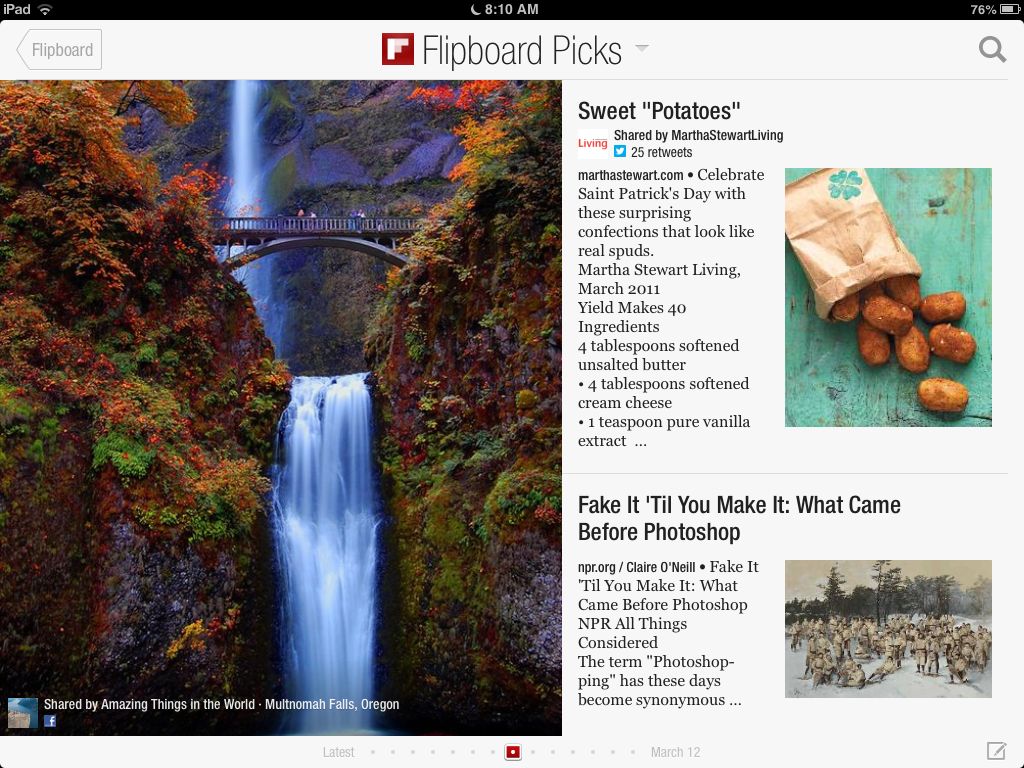Featured app: Flipboard
If you have a tablet or smartphone (iOS or Android) and you haven’t checked out Flipboard yet, I can safely say, you’re missing out!

Earlier, I posted about my affinity for Twitter. If you aren’t ready to commit wholeheartedly to Tweeting, but still want to read and share brilliant articles, tweets and other contributions from your favorite sources, try Flipboard.
I’ll admit, this is one of the few apps I jumped onboard with early-on (you could call me a Flipboard hipster, I guess). When it was first released, few articles had the capability of being “flipped” through as if they were pages in an ebook. Now, more and more producers are gravitating toward creating articles using the interactive Flipboard format.
Certainly some of the most impressive topics are those with a high degree of visual impact or imagery. Choosing the category of “Flipboard Picks” will yield articles that tend to take full advantage of the app’s interface and are photo-heavy.
The brilliant part about Flipboard is that you can choose content that appeals to your tastes. You can choose specific news sources (The New York Times, bon appétit, The Guardian, Oprah, Fastcompany, to name a few) or general categories which will aggregate articles from various areas. Admittedly, I’ve never been a big fan of the newspaper because nothing really grabs my attention when it’s buried five pages down and I despise having to work too hard to find articles on their online counterparts. Flipboard is an addictive means for delving into news with a focus on your passions. You can flip past titles that are of no interest only to uncover more interesting stories with the swipe of a finger. Sharing features embedded into the program allow you to send the articles to your Facebook, Twitter or even via email. You can also add your Twitter/Facebook/Google + accounts to view content within Flipboard.
I find this app to serve as a great replacement for visiting a single news site or only reading the limited kinds of musings I read on Twitter due to the relatively narrow list of individuals I follow.